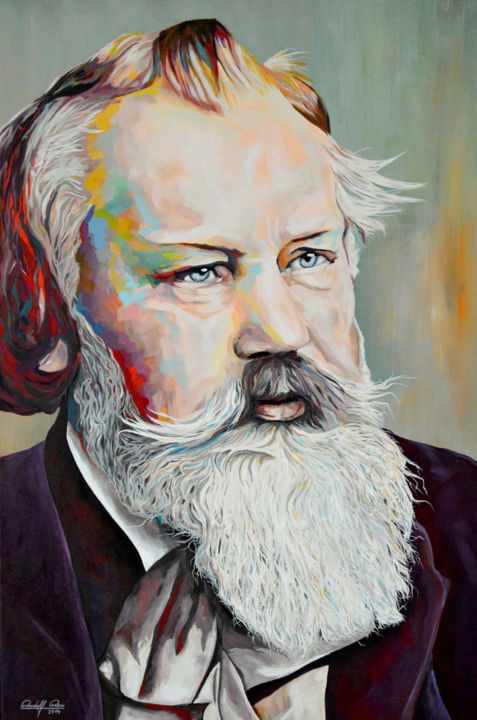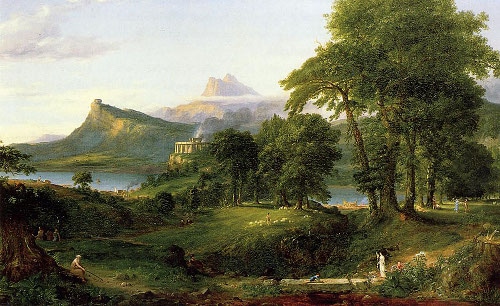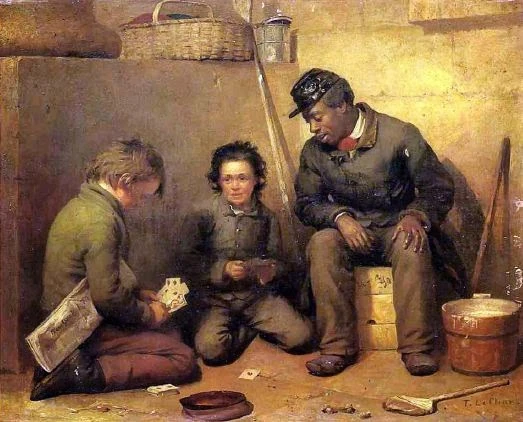The Romantic Era was a period of artistic, literary, and intellectual movement that originated in Europe towards the end of the 18th century. It was characterized by its emphasis on emotion and individualism, glorification of all the past and nature, and preference for the medieval rather than the classical. The interplay between literature, music, and visual arts during this period was not just a mere coexistence but a dynamic intermingling that influenced each of these art forms.

In literature, Romanticism found its voice through the works of writers such as William Wordsworth, Samuel Taylor Coleridge, Lord Byron, Percy Bysshe Shelley, and John Keats. They broke away from the strict forms and rationalism of the 18th century in favor of more lyrical, subjective, and emotionally charged works. Wordsworth’s “Lyrical Ballads,” for instance, is a milestone that marked the beginning of the Romantic age in English literature. In these works, nature was not just a backdrop but an integral character that interacted with the human spirit, reflecting its complexities and emotions.
The music of the Romantic Era was no less expressive. Composers like Ludwig van Beethoven, who bridged the Classical and Romantic periods, Franz Schubert, and later Johannes Brahms, Frédéric Chopin, and Richard Wagner, expanded the scope and scale of their compositions to allow for greater emotional expression. Beethoven’s “Symphony No. 9” is a prime example of the expressive power of Romantic music, with its dramatic dynamics and the pivotal use of a chorus in the final movement to convey a universal message of brotherhood.

Visual arts during this period also underwent significant transformations, with Romanticism art pieces emphasizing emotions and individualism. Painters like Caspar David Friedrich, J.M.W. Turner, and Eugène Delacroix created works that were charged with a sense of awe and grandeur. Friedrich’s “Wanderer above the Sea of Fog” encapsulates the Romantic spirit of individualism and the sublime. Turner’s “The Fighting Temeraire” nostalgically commemorates the passing of an older, heroic age.
The interplay between these art forms can be seen in the way literature influenced painting and music. Many Romantic images took their themes from literature and mythology. Delacroix’s “Liberty Leading the People” is steeped in the contemporary political climate and inspired by the spirit of the literary works of his time. Similarly, literature and visual arts inspired music. Opera, a form that combines all three skills, flourished during the Romantic period. Wagner’s “Der Ring des Nibelungen” is a cycle of four epic music dramas based on ancient Germanic and Norse myths, filled with leitmotifs that represent characters, objects, and emotions, a technique that illustrates the Romantic preoccupation with linking musical themes to extra-musical concepts.
The Romantic Era’s blending of arts also gave rise to program music, instrumental music that tells a story or paints a picture, exemplified by Hector Berlioz’s “Symphonie fantastique,” which depicts an artist’s self-destructive passion for a beautiful woman. This piece is a musical narrative that uses the orchestra to create a vivid storytelling palette, echoing the descriptive powers of literature and painting.
Furthermore, the cross-pollination of ideas between these art forms was facilitated by the salon culture of the time, where intellectuals, artists, and musicians would gather to discuss their work, share ideas, and inspire each other. These salons were the crucibles of Romantic thought, where the boundaries between the arts were blurred, and their interplay was most dynamic.

Towards the end of the Romantic period, the arts began to evolve into movements such as Realism in painting and Naturalism in literature, which sought to depict the world with greater fidelity. Nonetheless, the Romantic legacy persisted, influencing various art forms and movements well into the 20th century.
The Romantic Era’s interplay of literature, music, and visual arts was a testament to the era’s belief in the unity of the arts. It was an age when these forms of expression borrowed from each other to create works that were more than the sum of their parts, works that continue to resonate with audiences today. Romanticism art pieces, with their deep emotional currents and reverence for the natural and the heroic, remain some of the most influential and enduring works of human creativity.
Also, Read The Following: Derek Dennis Frazier.


